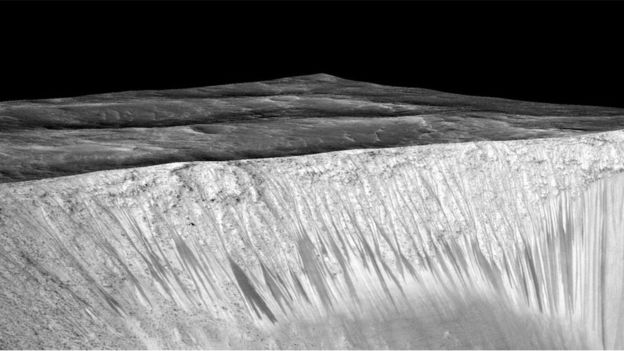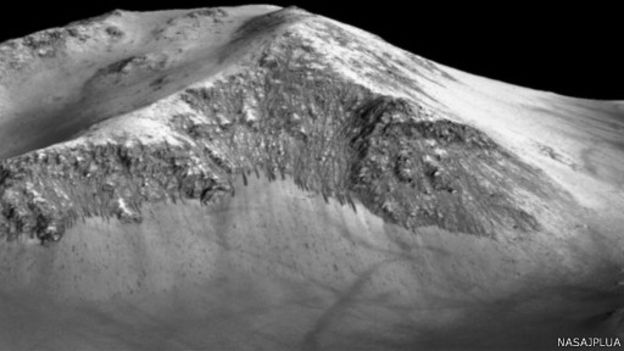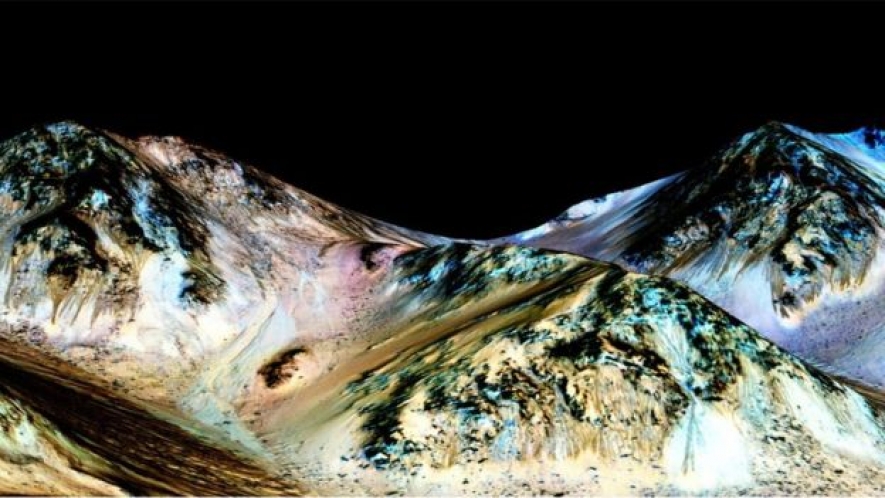Data from a Nasa satellite shows the features, which appear on slopes, to be associated with salt deposits.
Crucially, such salts could alter the freezing and vaporisation points of water in Mars's sparse air, keeping it in a fluid state long enough to move.
There are implications for the existence of life on the planet today, because any liquid water raises the possibility that microbes could also be present. And for future astronauts on Mars, the identification of water supplies near the surface would make it easier for them to "live off the land".
"It may decrease the cost - and increase the resilience - of human activity on the planet," co-author Mary-Beth Willhelm, from the Nasa Ames Research Center in California, said in a US space agency media briefing on Monday.
Researchers have long wondered whether liquid water might occasionally flow across the surface today.






















